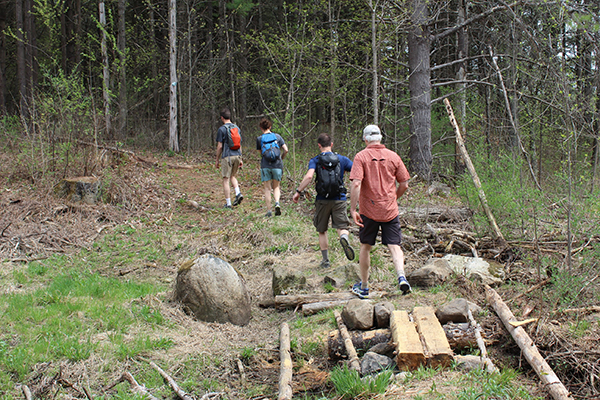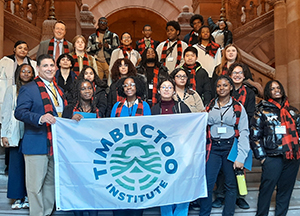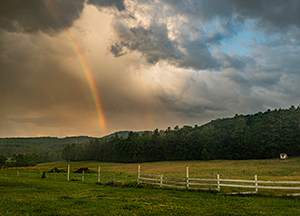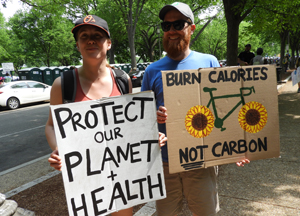
The 5th Season | Spring in the Adirondacks?
By: Diane Fish - Adirondack Council Deputy Director
Tuesday, April 17, 2018
April (or Spring) in the Adirondacks. This is a time of year, “mud-season,” when year-round residents of the Adirondack Park are tested. Friends and family in other places are preparing their garden beds and getting out their bicycles, while the Adirondacks endure a seemingly endless string of days with weather forecasts like “wintry mix, freezing rain, drizzle,” and with temperatures stuck in the 40s.
It’s easy to be an impatient outdoor recreation enthusiast in April...
The good skiing and snowshoeing are over. The lakes and streams are not yet open for fishing or boating. When the occasional sunny day triumphs over the grey and dreary (or when patience wanes and desperation kicks in), it’s tempting to push the seasonal envelope and leap ahead to warm weather trail activities like hiking and mountain biking. But for the sustainability of the trails, it’s essential to take a pause, show some restraint, and allow the trails to dry out – completely – before subjecting them to the onslaught of use that is now the Adirondack norm in the summer and fall seasons.
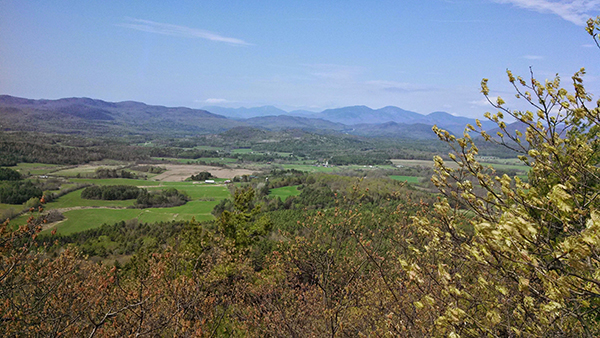 A view from Coon Mountain
A view from Coon Mountain
Why you should avoid hiking on muddy trails
The increasingly heavy use of the trails during the winter months by hikers and fat bike riders means even more patience and creative trail choices are required in the spring since the packed snow and ice on the trails will take longer to melt and dry.
The best way to approach early-season hiking and mountain biking is to only use trails that are completely dry. The last places to dry out will be at the higher elevations, so save your 46 High Peaks goals for the summer and fall. Spring is a great time to explore lower elevation places. Check out the many trails in the Champlain Valley. The Adirondack Forest Preserve trails (like those in Split Rock Wild Forest), trails managed by Champlain Area Trails, the Clintonville Pine Barrens, and Coon Mountain Preserve all offer opportunities to explore new terrain, enjoy views of the High Peaks, the valley, and Lake Champlain, and experience the Park’s bounty of biodiversity. If you’re chomping at the bit to get on your mountain bike, Barkeater Trail Alliance keeps the conditions of all BETA trails up to date on the TrailHub website. Many local mountain bikers get in shape for the summer trail season by riding the many gravel roads in the Champlain Valley, where there are quiet, low traffic roads.
Some final tips
If for some reason you find yourself on hiking trails that are still in the process of drying out, you can take steps to do the least amount of damage by staying in the middle of the trail. So it’s a good idea to carry micro-spikes throughout the spring and to wear waterproof shoes that will serve you well in damp situations. Following Leave No Trace principles and hiking in the middle of the trail – even if it’s icy or muddy – is the best way to avoid widening the trail. Hiking off the trail to avoid ice and mud increases trail erosion and diminishes the wild character of the trails.
These recommendations focus on the High Peaks and the Champlain Valley region. Do you have a recommended early season hike or mountain bike ride the Adirondacks?
 Diane joined the Council staff in 2001 and works with the Board and Staff to raise the financial resources needed to support the Council's conservation and advocacy efforts on behalf of the Park. An important step in this process is keeping in touch with supporters in all 50 states to understand their interests and concerns about the Adirondack Park and to engage members in the Council’s advocacy efforts.
Diane joined the Council staff in 2001 and works with the Board and Staff to raise the financial resources needed to support the Council's conservation and advocacy efforts on behalf of the Park. An important step in this process is keeping in touch with supporters in all 50 states to understand their interests and concerns about the Adirondack Park and to engage members in the Council’s advocacy efforts.
Diane shares other Council supporters' love of the Adirondacks, enjoys the Park's many outdoor recreation activities, and appreciates the astounding beauty of the Park every day.

